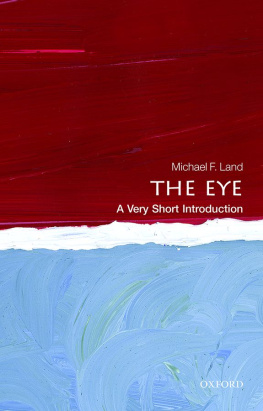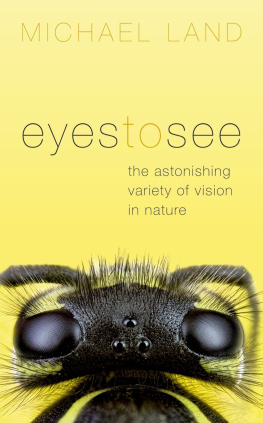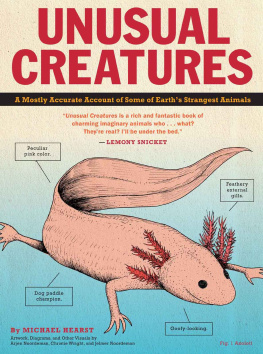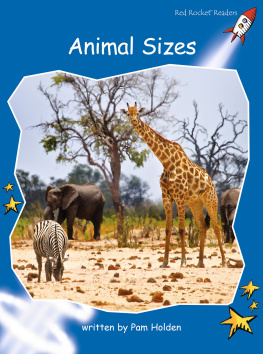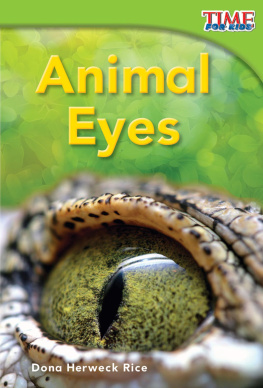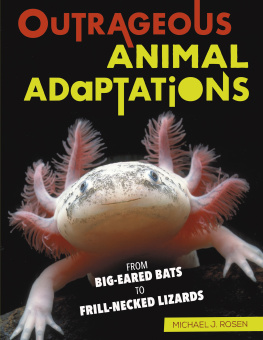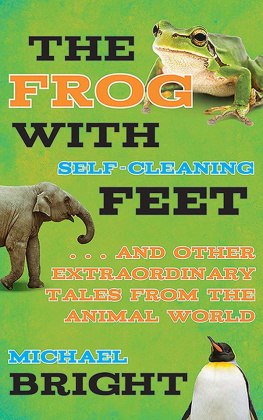Michael F. Land - Animal Eyes
Here you can read online Michael F. Land - Animal Eyes full text of the book (entire story) in english for free. Download pdf and epub, get meaning, cover and reviews about this ebook. year: 2012, publisher: Oxford University Press, genre: Home and family. Description of the work, (preface) as well as reviews are available. Best literature library LitArk.com created for fans of good reading and offers a wide selection of genres:
Romance novel
Science fiction
Adventure
Detective
Science
History
Home and family
Prose
Art
Politics
Computer
Non-fiction
Religion
Business
Children
Humor
Choose a favorite category and find really read worthwhile books. Enjoy immersion in the world of imagination, feel the emotions of the characters or learn something new for yourself, make an fascinating discovery.

- Book:Animal Eyes
- Author:
- Publisher:Oxford University Press
- Genre:
- Year:2012
- Rating:5 / 5
- Favourites:Add to favourites
- Your mark:
- 100
- 1
- 2
- 3
- 4
- 5
Animal Eyes: summary, description and annotation
We offer to read an annotation, description, summary or preface (depends on what the author of the book "Animal Eyes" wrote himself). If you haven't found the necessary information about the book — write in the comments, we will try to find it.
Animal Eyes — read online for free the complete book (whole text) full work
Below is the text of the book, divided by pages. System saving the place of the last page read, allows you to conveniently read the book "Animal Eyes" online for free, without having to search again every time where you left off. Put a bookmark, and you can go to the page where you finished reading at any time.
Font size:
Interval:
Bookmark:
Animal Eyes
Titles
Energy for Animal Life
R. McNeill Alexander
Animal Eyes
M. F. Land, D-E. Nilsson
Animal Locomotion
Andrew A. Biewener
Animal Architecture
Mike Hansell
Animal Osmoregulation
Timothy J. Bradley
Animal Eyes, Second Edition
M. F. Land, D-E. Nilsson
The Oxford Animal Biology Series publishes attractive supplementary textbooks in comparative animal biology for students and professional researchers in the biological sciences, adopting a lively, integrated approach. The series has two distinguishing features: first, book topics address common themes that transcend taxonomy, and are illustrated with examples from throughout the animal kingdom; and second, chapter contents are chosen to match existing and proposed courses and syllabuses, carefully taking into account the depth of coverage required. Further reading sections, consisting mainly of review articles and books, guide the reader into the more detailed research literature. The Series is international in scope, both in terms of the species used as examples and in the references to scientific work.
Second Edition
Michael F. Land
Professor of Neurobiology, University of Sussex, UK
AND
Dan-Eric Nilsson
Professor of Zoology, University of Lund, Sweden


Great Clarendon Street, Oxford OX2 6DP
Oxford University Press is a department of the University of Oxford.
It furthers the Universitys objective of excellence in research, scholarship,
and education by publishing worldwide in
Oxford New York
Auckland Cape Town Dar es Salaam Hong Kong Karachi
Kuala Lumpur Madrid Melbourne Mexico City Nairobi
New Delhi Shanghai Taipei Toronto
With offices in
Argentina Austria Brazil Chile Czech Republic France Greece
Guatemala Hungary Italy Japan Poland Portugal Singapore
South Korea Switzerland Thailand Turkey Ukraine Vietnam
Oxford is a registered trade mark of Oxford University Press
in the UK and in certain other countries
Published in the United States
by Oxford University Press Inc., New York
Michael F. Land and Dan-Eric Nilsson 2012
The moral rights of the authors have been asserted
Database right Oxford University Press (maker)
First edition published 2002
Second edition published 2012
All rights reserved. No part of this publication may be reproduced,
stored in a retrieval system, or transmitted, in any form or by any means,
without the prior permission in writing of Oxford University Press,
or as expressly permitted by law, or under terms agreed with the appropriate
reprographics rights organization. Enquiries concerning reproduction
outside the scope of the above should be sent to the Rights Department,
Oxford University Press, at the address above
You must not circulate this book in any other binding or cover
and you must impose the same condition on any acquirer
British Library Cataloguing in Publication Data
Data available
Library of Congress Cataloging in Publication Data
Library of Congress Control Number: 2011944054
Typeset by SPI Publisher Services, Pondicherry, India
Printed and bound by
CPI Group (UK) Ltd, Croydon, CR0 4YY
ISBN 9780199581139 (Hbk)
9780199581146 (Pbk)
1 3 5 7 9 10 8 6 4 2
For Rosemary and Maria
The study of animal eyes is cumulative; old knowledge is rarely superseded, but often added to. This is reflected in the way we have approached this new edition. The chapter layout of the first edition worked well, and we have retained it, along with much of the original text. We have concentrated on advances that have been made in the last decade, and on remedying some of the omissions of the first edition. has new material on the head movements of birds and insect larvae. Other chapters have been similarly updated, but not radically changed. And the last line of the original Preface should now read 80 years rather than 60.
The eye to most people means an eye like ours, a single-chambered camera-like structure with a retina in place of the film, or the CCD array. Most know, too, that insects have compound eyes with many lenses, but how many people can answer the question: does the insect see the multitude of images beloved of Hollywood horror films, or a single image similar to our own? We use this example to point out that, even to most biologists, eyes remote from our own are poorly understood and come in only one or two varieties. This hugely underestimates the diversity of eye types: there are at least ten quite distinct ways that eyes form images. Some of these such as pin-holes and lenses are familiar, but others are more exotic. These include concave mirrors, and arrays of lenses, telescopes, and corner reflectors. Some have been known about for centuries (the first demonstration of the inverted image in a mammalian eye was in 1619) but a number are discoveries of the last few decades and have yet to find their way into textbooks of either biology or optics. Some of these eye-types have counterparts in optical technology, but by no means all. Some are still finding applications: for example, the mirror-based optical system of the compound eyes of shrimps and lobsters has recently found a use as the optical basis of wide angle X-ray lenses.
It is our aim in this book to provide a comprehensive account of all known types of eye. We take the diversity of optical mechanisms as a framework, but many other aspects of the structure and function of eyes are also dealt with. Visual ecologythe ways that eyes are specifically adapted to the lifestyles of the animals that bear themis another important theme. As humans we tend to think of vision as a general-purpose sense, supplying us with any kind of information we require. For most other animals this is not so. Predators and prey, for example, have different visual requirements: foxes and rabbits have different eyes and different visual systems, as have dragonflies and mosquitoes. Similarly, a sedentary clam lives in a different world from a flying insect, and the optical requirements are quite different.
addresses these questions, and provides a context in which eyes can be seen as different solutions to problems that are, in many respects, similar.
As well as diversity, we are concerned with the design philosophy of eyes. What are the physical constraints on the way an eye performs its functions, and how are these addressed by the different types of eye? To answer this it is necessary first to have some information about the properties of light that are of importance for vision, and this we provide in , which is devoted to the question What makes a good eye?. This in turn provides a background for assessing the capabilities of the panoply of different eye types, presented in the subsequent five chapters. The ninth and final chapter examines another aspect of the way eyes are used: their movements. Eyes sample the world not only in space but in time, and the movements that they make are as important a part of the process of extracting information as are the optical systems that provide them with spatial resolution.
The book is not aimed at any one readership. It will be of value to undergraduates in Biology and Neuroscience programmes, and to anyone engaged in the study of vision at the post-graduate level. Students and practitioners of ophthalmology and optometry will find it interesting as a background to the study of the human eye, and optical physicists and engineers will find that nature has come up with solutions that they will not have met before.
Next pageFont size:
Interval:
Bookmark:
Similar books «Animal Eyes»
Look at similar books to Animal Eyes. We have selected literature similar in name and meaning in the hope of providing readers with more options to find new, interesting, not yet read works.
Discussion, reviews of the book Animal Eyes and just readers' own opinions. Leave your comments, write what you think about the work, its meaning or the main characters. Specify what exactly you liked and what you didn't like, and why you think so.

